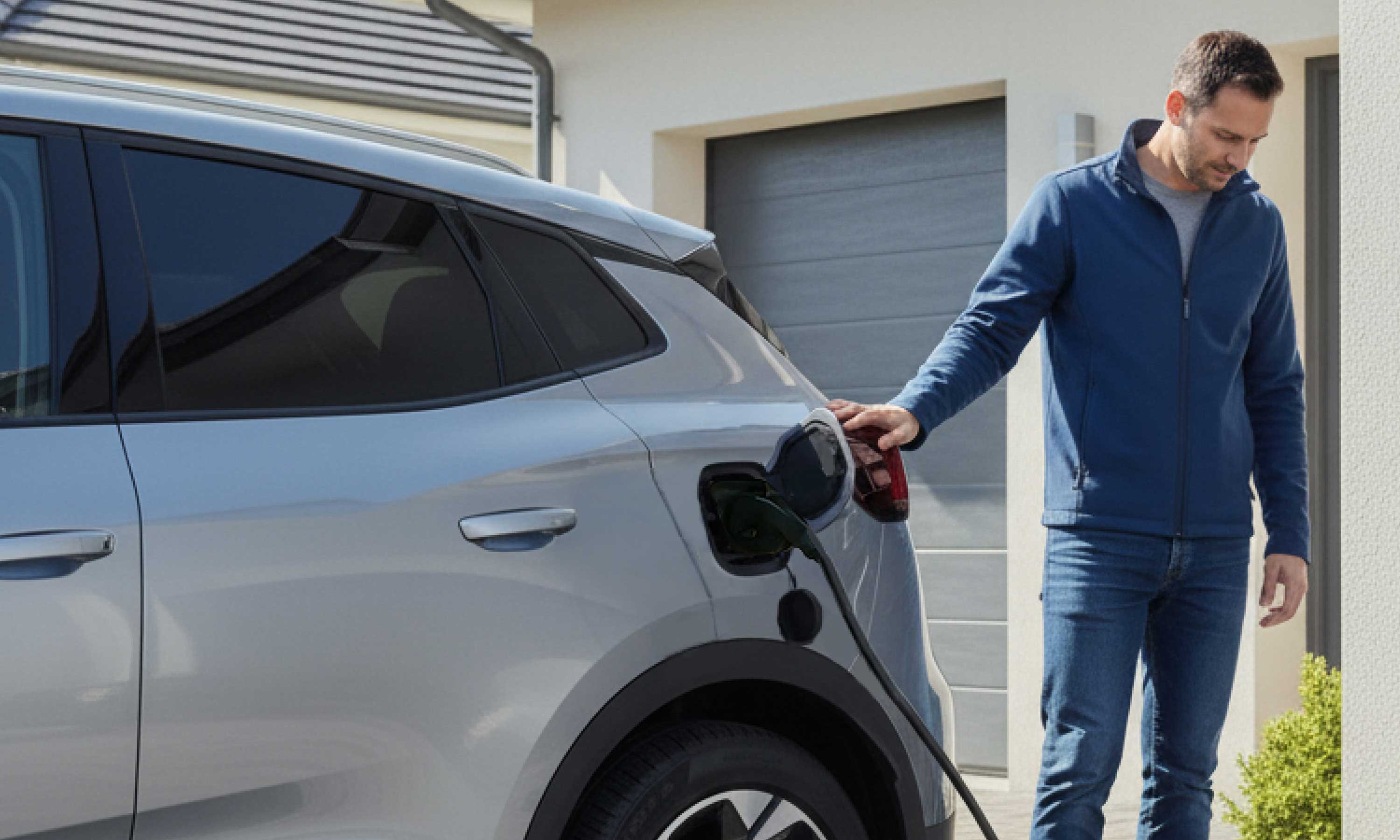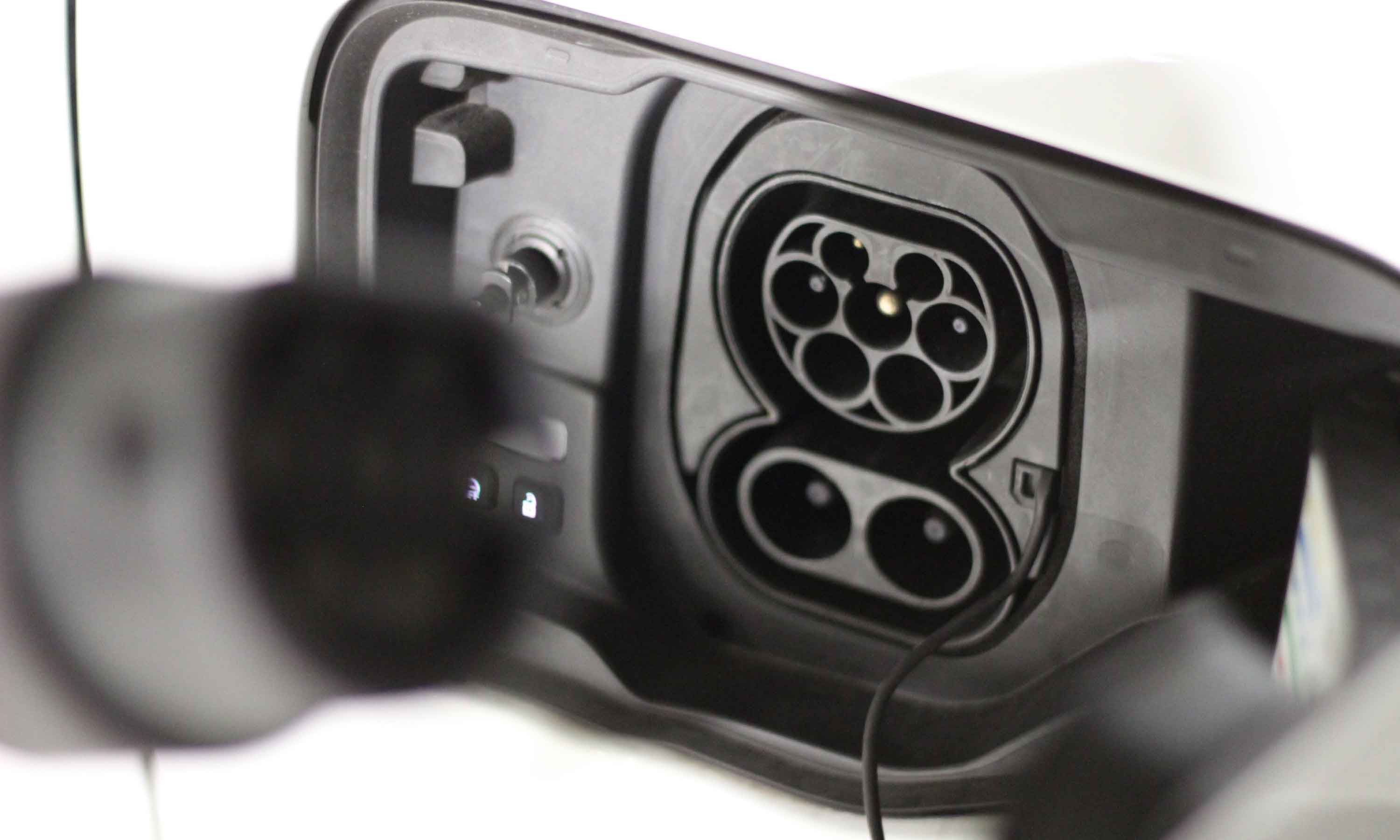Choosing the right plug for charging an electric vehicle is important. Several standards exist, such as Type 1, Type 2, CCS, and CHAdeMO. Sometimes, it can be difficult to know which one is suitable for your vehicle or electrical system.
This guide helps you understand how to recharge easily, at home or on the road, by explaining the compatibilities, charging speeds and uses of each type of plug.
Overview of charging socket standards in Europe
In Europe, several types of charging plugs coexist depending on the technology used, the charging speed, and the type of vehicle. These standards reflect the rapid evolution of the electric vehicle market, between older formats and new fast-charging solutions.
Type 2 (AC) — the European standard
The Type 2 connector is now the reference standard in Europe for alternating current (AC) charging. It is fitted to the majority of recent electric vehicles and can be found on almost all public and domestic charging points.
The charging power varies from 3.7 to 22 kW depending on the installation, and can reach up to 43 kW on some public charging stations.
This standard is distinguished by its broad compatibility, safety, and sufficient speed for everyday charging. However, the Type 2 connector does not support fast charging with direct current (DC).
👉 Check out our Type 2 socket guide.
CCS Combo 2 (DC) — the standardized fast charging
The CCS standard, for Combined Charging System, is an evolution of Type 2. It adds two extra pins to allow direct current (DC) charging.

The majority of electric vehicles produced in the EU incorporate a CCS socket, making it the European standard for fast charging.
This unique standard allows both AC charging via the Type 2 part and DC fast charging on high-power charging stations.
CCS enables charging power of up to 350 kW at ultra-fast charging stations. This provides a solution for charging the battery from 20 to 80% in just 20 to 30 minutes.
However, these charging stations require specific installation and cannot be deployed at home. They are therefore reserved for motorway service stations and high-power public networks.
Type 1 (AC) — the connector for older Asian models
The Type 1 connector has long been used on electric vehicles imported from Asia, such as the early Nissan Leaf or the Kia Soul EV. Limited to a power output of 7.4 kW in single-phase, it is suitable for slow or fast charging at home.
Although it has now been replaced by Type 2 in Europe, it is still used on some older or imported vehicles. Drivers of these vehicles can charge their cars from a Type 2 charging station using a Type 2 to Type 1 adapter cable.
CHAdeMO (DC) — Japan's historical technology
The CHAdeMO standard, which originated in Japan, marked the beginning of fast charging for electric vehicles. Used on models such as the Nissan Leaf or the Mitsubishi Outlander PHEV, it offers power outputs of 50 to 100 kW in direct current.
Despite its reliability, CHAdeMO is disappearing from the European market, supplanted by CCS, which has become the European standard. Nevertheless, many public fast charging stations remain equipped with this connector, ensuring connectivity for older vehicles.
Domestic socket and reinforced socket — supplementary use at home
The domestic socket, also called a type E/F or Schuko socket, is the one found in most European homes. It allows any electric vehicle to be charged via a charging cable, in what is called mode 2 charging.
This solution has the advantage of being simple and universal, but it remains intended for occasional use.
The charging power is slow (approximately 2.3 kW), which significantly increases charging times. Since the car remains plugged in for extended periods, an unsuitable installation can cause overheating or electrical hazards.
For regular use, a charging socket —such as a reinforced Green'up socket or equivalent—is a safer and more efficient alternative. It allows for a power output of 3.2 kW and incorporates specific safety features.
Which socket system should you choose depending on your needs?
The choice of charging point type depends primarily on your lifestyle. A driver who charges at home every night will not have the same needs as someone who drives a lot or someone who lives in an apartment building.
Daily use at home
For regular home charging, the Type 2 socket is currently the most suitable. Installed on a charging station (or wallbox), it offers an excellent compromise between speed, safety, and ease of use.
A 7.4 to 11 kW charging station makes it easy to recover 300 km of range overnight.
For a home installation, it is necessary to use a qualified professional, which involves additional costs.
💡 Good to know : For short trips or occasional use, a reinforced plug may be sufficient.
Long journeys and fast charging
Drivers who frequently travel long distances will prefer the Type 2 Combo CCS connector. Found on highways and major networks like Ionity, Tesla Supercharger, or TotalEnergies, it allows for a full charge in about twenty minutes.
This charging method is ideal when you want to recover maximum battery life in minimum time.
However, a home charging station can also effectively meet this need, provided it is properly sized and suited to the vehicle. A Type 2 charging station delivering between 7.4 kW (single-phase) and 11 kW (three-phase) allows for overnight charging, providing the equivalent of 300 to 500 km of range in 6 to 8 hours for a modern vehicle. This accelerated charging method is significantly more economical.
💡 Before buying an electric vehicle, remember to check the charging information to choose a solution that suits your needs.
Condominium ownership, work and rental
In shared housing or workplaces, charging must be shared and controlled. Shared charging stations equipped with Type 2 sockets are currently the simplest and most universal solution.
They allow users to be identified by RFID badge and consumption costs to be shared. In some cases, a reinforced socket on a private location may suffice.
Comparison of plug types according to usage
| Main use | Recommended plug type | Power | Estimated recharge time (20 → 80%)* |
|---|---|---|---|
| At home | Reinforced socket / Type 2 terminal | 3.7 to 22 kW | 2 to 8 hours depending on the power |
| Long journeys | Type 2 Combo CCS | 50 to 350 kW | ~15 to 40 minutes depending on the charging station and the charging curve |
| Vintage vehicles | Type 1 / CHAdeMO | 3.7 to 50 kW | ~4 h at 3.7 kW (AC) / ~30 to 40 min at 50 kW (DC) |
| Condominium | Reinforced socket / Type 2 on shared terminal | 3.7 to 22 kW | 4 to 8 hours depending on the power |
| In business | Type 2 on a connected terminal (access management) | 7.4 to 22 kW | 2 to 8 hours depending on the power |
* Estimate for an electric vehicle equipped with a 50 kWh battery, representative of the best-selling models in France.
Essential accessories for charging outlets
Charging an electric vehicle is not limited to the type of plug or charging station used.
The charging cable is the central element of the system. It connects the charging station to the vehicle and must be compatible with both the vehicle's socket and the charging station's socket.

Adapters allow you to connect to different types of electrical outlets. When traveling, having several adapters ensures compatibility with any available outlet and makes charging easier wherever you are.
More and more recent vehicles are incorporating V2X (Vehicle-to-Everything) technologies, and more specifically V2L (Vehicle-to-Load). Thanks to a bidirectional adapter for the plug, it is possible to use the vehicle's battery as a power source. This can be used to power an electrical device, recharge a bicycle, or even jump-start another vehicle.

All of these accessories help to make charging more convenient and to meet a variety of needs.
Frequently Asked Questions (FAQ) about charging outlets
What type of plug does an EV use?
In Europe, the majority of electric vehicles use a Type 2 plug for alternating current (AC) charging. This standard is common to most home and public charging stations.
For fast charging with direct current (DC), these same vehicles are generally equipped with a CCS connector, which allows them to connect to fast charging stations on the public network, particularly on highways.
Is a standard household outlet sufficient?
Yes and no. A standard power outlet can be used for occasional charging, provided the electrical installation is in good condition.
However, for regular home charging, this solution is insufficient: the power is limited and the risk of overheating is high. It is therefore recommended to install a reinforced socket or a dedicated charging station for greater safety and convenience.
What type of home charging point is needed for an electric car?
A reinforced socket is the only suitable and safe solution for charging an electric vehicle at home. It can handle the power required for daily charging, unlike a standard household socket, which is only suitable for occasional use.
What type of plug is found on fast charging stations?
Fast charging stations primarily use the Combo CCS connector, the European standard. Some older stations still offer a CHAdeMO connector, intended for early models like the Nissan Leaf or the Mitsubishi Outlander PHEV, but this standard is gradually disappearing from the network.
What is the difference between an AC and DC plug?
The AC (alternating current) socket is used on a charging station or outlet installed at home, connected to the domestic electrical system. It allows for both slow and fast charging, ideal for charging your vehicle in several hours at a lower cost.
The DC (direct current) socket is reserved for the public grid and fast charging stations. Energy is transmitted directly to the battery without going through the vehicle's charger. This is called fast charging because it allows you to recover up to 80% of the battery's range in just a few tens of minutes.



Leave a comment